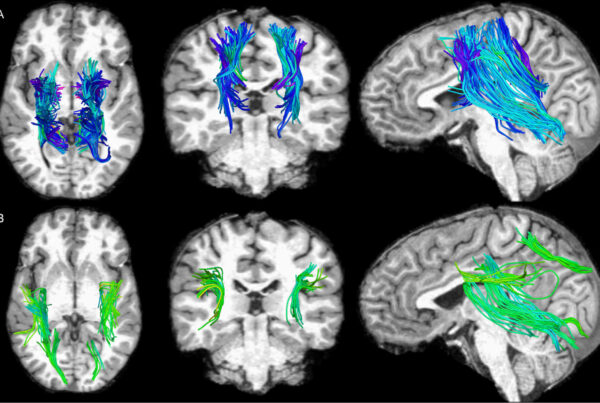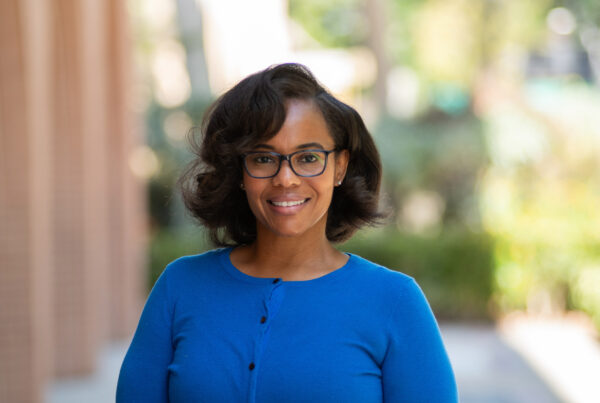Cary Kreutzer wants to help USC faculty and staff eat healthier.
“A healthy employee is a great mentor, a great teacher,” said Kreutzer, instructional professor of clinical gerontology at the USC Leonard Davis School and registered dietitian.
Kreutzer is turning her convictions into action as the co-leader of USC’s EatWell committee. Composed of faculty and staff, the committee is dedicated to improving the health of campus employees with a varied offering of healthy on-campus menu choices, short cooking videos, monthly lunchtime Zooms on healthy eating topics, and soon, a cookbook.
Faculty and staff “play an important leadership role in keeping students healthy and happy,” Kreutzer said. So the committee is asking “how can we help people who want to learn more about eating well, and how can we make this information easily available to them?”
EatWell is part of USC Healthy Campus, a cross-collaboration of USC faculty and staff working towards healthy culture change at USC. Healthy Campus partners across academic and administrative units to develop, implement, and ultimately institutionalize practices, policies, systems and environments essential for the creation of a health-promoting campus.
The EatWell subcommittee, led by Kreutzer and USC Hospitality registered dietitian Lindsey Pine, consists of faculty, staff, and nutrition students, who work together to create and support a health-promoting university. Other Healthy Campus subcommittees focus on mental health, physical activity, social connection and work-life harmony, said Julie Chobdee, associate director of USC’s health and well-being program.
Charged with selecting a faculty lead for the committee, Chobdee reached out to Kreutzer. As director of the Leonard Davis School’s Master of Science in Nutrition, Healthspan and Longevity program, Kreutzer is uniquely suited to advise on nutrition education and research, vet speakers and provide reliable, accurate information on the topic for the campus community, Chobdee said. “She has the expertise that we need,” Chobdee said. “She’s wonderful to work with – very collaborative, very passionate.”
One of the cornerstones of the EatWell program is “EatWell Bites,” monthly Zoom sessions that Kreutzer and Pine hope are both educational and manageably-sized (they are 30 minutes long, on the first Thursday of the month, from 12:15 to 12:45 p.m.).
The format has proved to be a winner. Up to 400 people RSVP for each webinar, with about 100 showing up for the live session, Chobdee said. “It’s been very popular, very positive responses from our faculty and staff,” she said. “They love the bite size. They love that it’s quick, simple and interactive.”
Topics have ranged from October’s Observe, Savor, Eat: Learn to be a Mindful Eater led by Michelle Katz, USC Student Health Center dietitian, to the most popular one so far, according to Chobdee: A Snack A Day Keeps the Hangry Away, led in September by Holly Wells, a bariatric dietitian at the department of surgery at the Keck School of Medicine.
Kreutzer prefers to call the webinars workshops rather than lectures because “we have a lot of interaction…we really want to engage participants,” she said. “As adult learners, it’s about getting your questions answered.”
People have so many questions about food in part because there are so many choices to make today, she said. “Even nutrition experts, we live in this environment [where] we have easy access to ultra-processed foods that are quick, that are easy, that don’t require refrigeration, that don’t require preparation,” she said. These foods can also be cheaper than preparing meals from scratch, she said.
But with a little bit of planning, eating well and nutritiously is both doable and delicious, Kreutzer said. “I’m not saying don’t ever eat out, don’t ever buy ultra-processed food,” she said. “But make whole foods your go-to first choice.”
Many campus eateries now offer EatWell branded meals, marked by an EatWell logo, that are designed to be balanced in sodium, added sugar and calories, and do not contain trans fats or partially hydrogenated oils. They include options like the Breakfast Buddha Bowl at Seeds Marketplace, the Roasted Chicken Salad at Café Annenberg, and the Pomodoro Pasta at Filone’s.
“Our objective is to give people delicious, nutrient-rich meals that just happen to fit within the federal nutrition guidelines,” said Pine, who relied on the US Dietary Guidelines, researched what other universities were doing, and talked to other dietitians on the EatWell committee, as she and the USC Hospitality retail culinary team worked to create the dishes.
The program, while targeting faculty and staff, is also available to students, a fact which Pine kept front-of-mind as she designed the EatWell menu. “We have to be very careful in our messaging, since disordered eating is a huge concern on college campuses,” she said. “We do not cater to specific diets… We don’t want people to obsess over numbers.”
For those able and/or interested in making their own food, the EatWell site has recipes, illustrated with videos, of lunches like a 10-minute, 7-ingredient chickpea salad and dinners such as a 15-minute, 5-ingredient chicken and mushroom stir-fry. All videos are produced by Leonard Davis School graduate nutrition students as part of their internship training. For her part, Kreutzer likes to make soup for lunch. “I can easily freeze my lentil soup in Pyrex bowls, then defrost [a bowl] and take it into the office,” she said. “We have a fridge and a microwave in my workspace, so it’s easy enough to heat up… it just takes planning ahead.”
If she’s also got some leftover rice, or a bit of broccoli she didn’t eat at dinner, she might throw that into the bowl as well when she reheats it, she said. In a pinch, she sometimes buys cans of lentil soup at the market, then bulks it up with her own additions, she said.
For those who say all this healthy eating sounds forbidding, even alien, Kreutzer sympathizes. She grew up in a family where lunch was baloney on white bread and dinner a pack of ground beef and a box of Hamburger Helper. But when her father died in his mid-50s, Kreutzer believed his poor diet contributed to his heart disease and diabetes. She vowed then to change what she put in her body. She still enjoys the occasional ice cream or chocolate, she said. But she’s also learned to enjoy vegetables, brown rice and lentils.
“I understand that behavior is hard to change,” Kreutzer said. “You just start somewhere with making better choices and balancing your intake of comfort foods along with nutrient-dense whole foods.”





